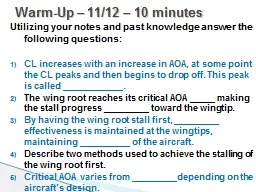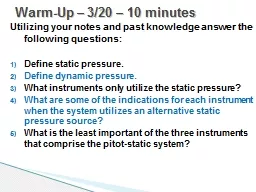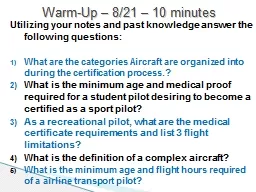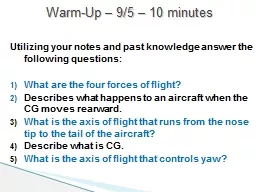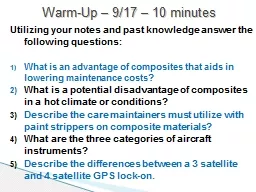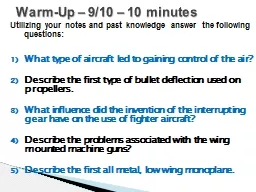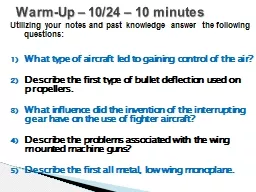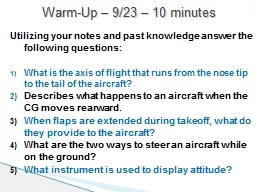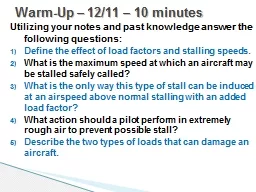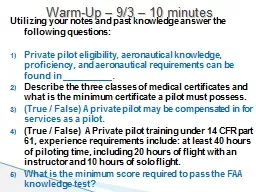PPT-Utilizing your notes and past knowledge answer the followin
Author : lois-ondreau | Published Date : 2016-04-22
CL increases with an increase in AOA at some point the CL peaks and then begins to drop off This peak is called The wing root reaches its critical AOA making
Presentation Embed Code
Download Presentation
Download Presentation The PPT/PDF document "Utilizing your notes and past knowledge ..." is the property of its rightful owner. Permission is granted to download and print the materials on this website for personal, non-commercial use only, and to display it on your personal computer provided you do not modify the materials and that you retain all copyright notices contained in the materials. By downloading content from our website, you accept the terms of this agreement.
Utilizing your notes and past knowledge answer the followin: Transcript
Download Rules Of Document
"Utilizing your notes and past knowledge answer the followin"The content belongs to its owner. You may download and print it for personal use, without modification, and keep all copyright notices. By downloading, you agree to these terms.
Related Documents

